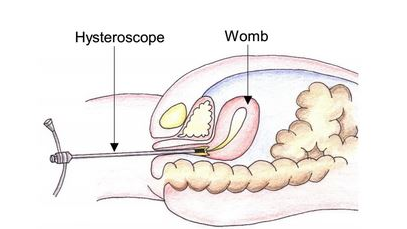A hysteroscopy is usually a safe and effective procedure to look at the inside of your womb (uterus). It is most often used for finding out the cause of abnormal bleeding from your womb, especially heavy periods and bleeding after menopause.
The procedure will also help you discover whether you have fibroids (non-cancerous tumours that grow in or around the womb), polyps (non-cancerous lumps), endometrial cancer or an abnormally-shaped womb.

Are there any alternatives?
It may be appropriate to identify the cause of your symptoms using a scan and by performing a biopsy. A biopsy involves removing small pieces of the lining of your womb by using a small tube placed across your cervix (neck of your womb). The tissue will be removed and tested to help diagnose a number of health conditions. Alternatively, your gynaecologist may recommend a sono-ultrasound where an ultrasound device is placed in your vagina.
What is involved in the procedure?
For a hysteroscopy, your gynaecologist will pass a small telescope (hysteroscope) through your vagina, across your cervix and into your womb. The surgeons will then inflate your womb using gas (carbon dioxide) or a fluid, in order to get a clearer view. They can use instruments to perform a biopsy or remove polyps and small fibroids. The procedure can be performed under local or general anaesthetic, or without any anaesthetic at all. A hysteroscopy usually takes less than ten minutes to complete but can be up to 30 minutes depending on what needs to be done. The healthcare team will tell you what was found during the hysteroscopy and will discuss with you any treatment or follow-up that may be needed.
How long will it take to heal?
You should be able to return home the same day as your procedure and resume normal activities the next day, although you may experience some cramps and mild bleeding.
